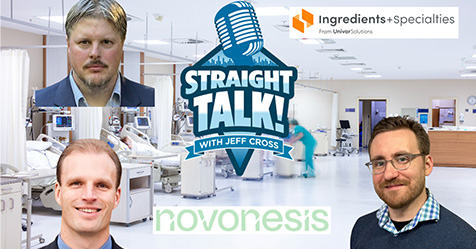Competitive Companies Focus on Age Inclusion
Stay competitive in a world shaped by population aging by making workforce shifts
Companies that want to remain competitive are examining a new market that is designed for the full life course, Harvard Business View reported. This market is not defined by age alone, but by longevity, reinvention, and the realities of multigenerational living.
Globally, one in six people is now over the age of 60, and this figure is expected to double by 2050, according to the United Nations. In the U.S., adults aged 65 and older are expected to outnumber children under 18 by 2034.
As life expectancy has increased, so have the capabilities and aspirations of older adults. Today’s 60- and 70-year-olds are starting businesses, caregiving for family members, and running marathons. They’re not fringe cases—they’re the future mainstream, and they’re underrepresented in workforce planning, product design, and marketing.
Yet many companies still treat aging as a risk to be managed, not a consumer and talent opportunity to be embraced. Advertising often defaults to youthful imagery or treats older adults as burdens or punchlines.
This mindset is not only outdated but also contrary to market forces. In the U.S., according to AARP, adults over 50 control nearly 70% of household wealth. Globally, they account for 42% of consumer spending. And, according to the U.S. Bureau of Labor Statistics, labor force participation among people over 65 has nearly doubled since 2000—outpacing all other age groups.
Life-course design requires a wholesale shift in how companies think about age, not as a demographic silo, but as a design and strategy imperative. That means moving beyond generational targeting (Boomers, Gen X, Millennials, Gen Z) to a framework that reflects the dynamic, nonlinear paths people take through education, work, caregiving, health, and reinvention.
To stay competitive in a world shaped by longevity and population aging, businesses should make strategic product and workforce shifts.
Product design leaders should:
- Replace generational stereotypes with behavioral segmentation, building strategies around what motivates people to make a purchase, or marketing around specific life events, like having a child. McKinsey & Company found that companies using behavioral and psychographic segmentation in their marketing campaigns saw returns up to three times higher than those relying solely on demographic or age-based segmentation.
- Use inclusive design principles that benefit everyone (e.g., clearer interfaces, easier grip, adjustable lighting). A study by Accenture found that companies that have led on key disability inclusion criteria saw 1.6 times more revenue, 2.6 times more net income, and twice the economic profit of other companies.
- Invite older adults into the research and design process early and often to test usability, relevance, and desirability.
Traditional career models assume people peak in their 40s and retire by 65. But those assumptions no longer hold. Longer lives mean longer working years, but not necessarily in the same roles or with the same cadence.
Forward-looking talent leaders should:
- Redesign roles and workflows to accommodate physical, cognitive, and lifestyle changes.
- Introduce phased retirement, part-time leadership roles, and mid-career reskilling.
- Extend leadership development to late-career professionals who still have decades of contribution ahead.
Research shows that age-diverse teams drive better financial performance and are more resilient, particularly in industries where institutional knowledge and adaptability are critical.
Company leaders should:
- Structure teams with age diversity as an intentional design element.
- Establish mutual mentorship programs that value experience and innovation equally.
- Train managers to navigate generational expectations around communication, work-life balance, and performance.


